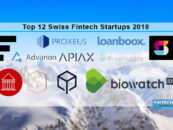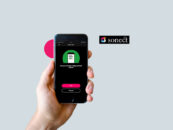
Social-Private-Banking: How to Make Customers (with Fintech) more Happy?
by Fintechnews Switzerland March 29, 2017We all want to be satisfied. We want to be happy. Each generation and culture, however, interprets “happiness” differently. Being satisfied is something personal and personalised. Whoever manages to create happiness and/or satisfaction for others, fosters their trust.
By: Eric Salzmann
For private banking, trust is key. Can a private bank foster the satisfaction and happiness of a customer? If so, is it thanks to the high yields? Is it thanks to the negotiated mortgage? Is it thanks to the risk optimisation, the research?
With regard to today’s products, private banks hardly differ anymore. All products offered to the customers are simply goods. Goods that do not make them happy(-ier). It is all the same to the customer, which private bank provides the mortgage – the main thing is that it is taken out. If it is not by means of the bank’s products, “then how do you make a customer happy?”
How to make a customer happy?
In the first place, it is usually very concrete and simple things1. Along with love, there are many concrete activities/occupations that represent “happiness”: visits to theatres, concerts, exhibitions or museums, gardening, singing, hiking, events etc.
Even very specific services can make the customer happy, such as babysitting, chauffeur service, translation etc.
Private banks usually only make standard offers in these areas (dinner, boring consulting and every now and then a golf tournament). Instead, the private bank should tailor itself much more to the customer’s social and individual preferences, and offer customised services.
To look after your customers is the relationship managers (RM) daily bread. Therefore, the RM ought to receive the best possible support through an appropriate infrastructure as well as access to a social network.
Thus, the social relationship manager (SRM) of the private bank can offer their customers new, customised and goal-oriented services.
The Social-Relationship-Manager (SRM)
The offered services ought to be provided to the SRM by the private bank through digital channels and portals. He has to get easy and reliable access to events, courses, previews, exhibitions, chauffeur services, babysitting etc. T
he respective providers, such as event agencies, schools, museums, curators, art institutes, galleries, taxi companies, babysitting agencies etc., should cooperate with the private bank by offering the SRM a representative selection in order to provide the customers with very specific and goal-oriented offers and services.
This could be a visit to a preview with/without the SRM, for instance. It could also simply be a concert ticket, along with a weekend-stay at a hotel, a guided hike included. The opportunities this holds are currently inestimable, but they are grand.
The classic consulting business of the bank’s products has not become obsolete because of the new transformation from RM to SRM. On the contrary: There will always be a need for an efficient, inexpensive and high-quality consulting for a financial product. But who will undertake these tasks? New, digital, optimised possibilities within the financial technology (Fintech) enable us to handle old processes and solutions in a better, faster and more cost-effective way.
Digital automised private banking
Fintech offers a multitude of banking solutions that are better, cheaper, faster and simpler2 . Various banks have already implemented services within these new financial technologies.
- Investment advice is carried out by robot-advisors, that show a better performance than human-advisors
- Consulting happens through chatbots and ensure the greatest customer satisfaction
- Wealth-management, including measures for risk optimisation, have become much better and faster
- Risk management and credit assessments have long been taken over by self-learning software (AI)
- Financing can be highly automated thanks to alternative solutions, such as crowd lending and crowd funding, and achieve better conditions
Optimising the existing products and processes is only the first step; what is more is the possibility of opening up a new world that is still unknown to the banks.
Connecting the Bank to a new World
By the implementation and/or usage of Fintech, new segments, business areas, possibilities and positive effects become accessible to the banks. A few examples:
- Crowd lending, crowd funding etc. provides data of new potential customers → time-consuming creditworthiness assessments and risks are outsourced
- Fintechs process research / market analytics better, faster, more precise and more customer-friendly. Therefore, internal research becomes obsolete.
- The SRM has access to new and more personal customer data. This allows for precisely determining customer needs (smart data) and launching more successful campaigns
- New alternative assets can be offered (e.g. crypto currencies)
- New credit models are created. Among other things, warranties of physical assets (e.g. luxury watches) can be used as a deposit for an educational credit (smart-contract, block chain)
- New partnerships with Fintechs, start-ups and big-tech-players (e.g. Apple, Google, Microsoft, Facebook, Amazon) enable completely new business areas.
- The bank-brand’s attractiveness increases: Especially among customers in their thirties and younger the reputation of tech-companies is better than the reputation of banks.3
Conclusion: The SRM is and will remain the central figure within the relationship-management. In order to enable the SRM to fulfil his or her newly assigned tasks, the private bank will be required to initiate and undergo a digital revolution.
Article first appeared on Linkedin.com by Salzmann Eric





